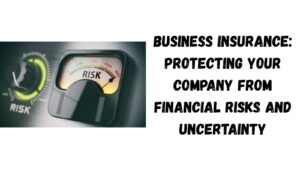When it comes to protecting your home, flood insurance is often one of the most overlooked policies by homeowners. However, floods are one of the most common natural disasters in the United States and across the globe. Floods cause over $8 billion in insurance claims yearly in the U.S., says the National Flood Insurance Program (NFIP). Yet, many homeowners are unaware of the critical protection that flood insurance can provide.
Flood insurance protects damage from flooding. This coverage usually isn’t part of a standard homeowner’s insurance policy. In this guide, we’ll explore what flood insurance covers, its types, real-time examples, important statistics, and more. By the end, you’ll understand the value of this specialized coverage and why it’s a crucial part of your home insurance plan.

What is Flood Insurance?
Contents
- 1 What is Flood Insurance?
- 2 Types of Flood Insurance Coverage
- 3 What Flood Insurance Doesn’t Cover
- 4 How Much Does Flood Insurance Cost?
- 5 Why Do You Need Flood Insurance?
- 6 Fun Fact:
- 7 Conclusion: Is Flood Insurance Worth It?
- 8 Frequently Asked Questions (FAQs)
- 8.1 1. What is the difference between flood insurance and homeowners insurance?
- 8.2 2. Do I need flood insurance if I don’t live in a flood zone?
- 8.3 3. How much flood insurance do I need?
- 8.4 4. Does flood insurance cover flooding caused by a storm surge?
- 8.5 5. Can I purchase flood insurance at any time?
Flood insurance is a type of coverage designed to protect property owners from financial losses caused by flooding. It covers property damage from too much water. This can happen due to heavy rain, snowmelt, storm surges, or hurricanes.
Flood insurance is different from regular homeowner’s insurance. Homeowner’s insurance covers risks like fire, theft, and vandalism. Flood insurance is separate. This is because floods are seen as a separate risk not included in standard home policies.
Flood insurance is usually offered by the National Flood Insurance Program (NFIP). This program is run by FEMA, the U.S. Federal Emergency Management Agency. Private insurance companies also provide similar coverage. Flood insurance policies have limits and exclusions. It’s important to know them before you buy one.
The Importance of Flood Insurance
While floods are a common risk, many people underestimate the likelihood of needing flood insurance. However, FEMA data shows that 1 in 4 flood claims come from properties located outside high-risk flood zones. This is especially important after disasters like Hurricane Katrina, Harvey, and Sandy. The damage spread far beyond floodplains and coastal areas.
Flood insurance protects your home and belongings from flood damage. It provides the money needed to rebuild or replace what is lost.
Types of Flood Insurance Coverage
Flood insurance policies typically include two main types:
- Building Property Coverage
- Personal Property Coverage
Let’s take a closer look at each type:
1. Building Property Coverage
Building Property Coverage is the foundation of flood insurance. This part of the policy covers the physical structure of your home, including the foundation, walls, roof, and floors. It also covers permanent fixtures, such as plumbing and electrical systems.
Key things covered by Building Property Coverage:
- The physical structure of the home (roof, walls, and foundation)
- Major systems, including electrical, plumbing, and heating systems
- Appliances that are permanently installed, such as water heaters and air conditioners
- Detached garages and sheds (up to a certain value)
- Debris removal following a flood
Real-Time Example:
In Hurricane Harvey (2017), floodwaters impacted over 300,000 homes. Many residents depended on flood insurance to help rebuild. A homeowner with Building Property Coverage fixed his home’s foundation. He also restored key systems, like the electrical wiring, damaged by the floodwaters.
2. Personal Property Coverage
Personal Property Coverage protects your home’s contents. This includes furniture, electronics, clothing, and other personal items. This part of the policy is especially important for those with valuable possessions that could be lost in a flood.
Key things covered by Personal Property Coverage:
- Furniture, clothing, and electronics
- Personal documents (e.g., birth certificates, passports)
- Valuables such as jewelry, artwork, and collectibles
- Electronics such as televisions and computers
- Carpets and area rugs (if they’re not permanently installed)
- Clothing and personal belongings
Real-Time Example:
During Hurricane Katrina in 2005, a family in New Orleans lost not just their home but their personal belongings as well. Their flood insurance paid for new electronics, clothing, and furniture lost in the flood. This helped them recover and move forward.
Fun Fact: FEMA reports that personal property claims make up over 60% of flood insurance payouts. This shows how vital it is to protect your belongings.
What Flood Insurance Doesn’t Cover
While flood insurance provides vital protection, it has certain exclusions and limitations. Understanding what flood insurance doesn’t cover is equally important.
Things Not Covered by Flood Insurance:
- Flood damage caused by poor maintenance (e.g., clogged gutters)
- Sewer backups or flooding caused by a malfunctioning sump pump (unless specifically added to your policy)
- Landscaping (e.g., plants, shrubs, trees)
- Losses from earthquakes or landslides triggered by a flood
- Vehicle damage (this is usually covered by auto insurance)
- Cost of improving or upgrading your home after a flood (unless required by local building codes)
Many homeowners buy extra coverage for special needs. This includes
How Much Does Flood Insurance Cost?
The cost of flood insurance varies depending on several factors, such as:
- The location of the property (properties located in high-risk flood zones typically pay higher premiums)
- The type of flood insurance coverage you need (Building Property vs. Personal Property)
- The amount of coverage you choose
- The elevation of the property (elevated homes may have lower premiums)
- The policy’s deductible amount
Flood insurance premiums usually cost between $300 and $1,500 each year for homeowners. Extra costs may apply based on your property’s flood zone and coverage amount.
Real-Time Example:
A family in a moderate-to-low risk flood zone might pay around $500 each year for flood insurance. In contrast, a family in a high-risk zone, like coastal or riverfront areas, could pay as much as $2,000 annually.
Why Do You Need Flood Insurance?
In the United States, flooding is the most common and costly natural disaster. In fact, about 20% of flood insurance claims come from properties in low- to moderate-risk flood zones. This statistic shows that floods can occur anywhere, and homeowners should not assume they are safe from this risk.
Consider the case of Hurricane Harvey: Over 80% of flood victims in the Houston area did not have flood insurance. Many residents struggled financially when their homes were badly damaged. Many could not afford the repair costs. Flood insurance can help avoid such situations by offering financial protection.
Fun Fact:
Did you know that flood damage is not just caused by hurricanes or major storms? According to FEMA, heavy rain, spring snowmelt, and flash floods are responsible for the majority of flood claims in the U.S.
Conclusion: Is Flood Insurance Worth It?
Flood insurance is vital for homeowners. It provides financial protection during disasters that can destroy your home and belongings. Whether you live in a floodplain or a low-risk area, investing in flood insurance is a wise decision to safeguard your property.
By 2025, more people realize how vital flood insurance is. This change comes from more extreme weather and flooding in surprising areas. The government is pushing for disaster preparedness and flood mitigation. This shows the rising need for this specialized coverage.
Even if you aren’t in a high-risk flood zone, you should still check your risk. Know your coverage options. Also, consider getting flood insurance before disaster hits. Remember, floods can happen anywhere, and when they do, you’ll be glad you had the right insurance policy to protect your home.
Disability Insurance: Safeguarding Your Income and Well-being in Times of Illness or Injury
Frequently Asked Questions (FAQs)
1. What is the difference between flood insurance and homeowners insurance?
Homeowners insurance generally does not cover damage caused by floods. Flood insurance is a special policy. It covers damage to your home and personal belongings if flooding happens.
2. Do I need flood insurance if I don’t live in a flood zone?
Yes, even if you don’t live in a high-risk flood zone, you could still experience flooding due to heavy rains or other causes. FEMA reports that 1 in 4 flood claims come from moderate-to-low-risk areas.
3. How much flood insurance do I need?
The amount of flood insurance you need depends on the value of your home, the contents inside, and your location. You should consider both Building Property Coverage and Personal Property Coverage.
4. Does flood insurance cover flooding caused by a storm surge?
Yes, flood insurance usually covers storm surge damage from hurricanes and tropical storms. This is true if the flooding comes from an outside source, like a river or ocean.
5. Can I purchase flood insurance at any time?
Yes, you can purchase flood insurance at any time. However, keep in mind that there’s usually a 30-day waiting period before the policy takes effect, so it’s essential to plan ahead.
This comprehensive guide on flood insurance should give you a clear understanding of its importance, types, costs, and more. Get flood insurance to protect your home and belongings during a natural disaster.


